Origins of the Holy Roman Empire: Part 5
This marks the final part of this series focusing upon the 9th century political, social, and territorial changes that spilt the Carolingian Empire into what eventually became East and West Francia
It has been some time since the previous chapter of this series in which we explored the social structure and architecture of the 9th and 10th centuries in what would become the Holy Roman Empire (HRE). This was necessary in order to define key terms that will continue to populate articles on this substack, such as ministerialis, noble, peasant, prince, and Romanesque. Now that the terminology has been extensively discussed, adding to the descriptions of the differences between grafio and comes, in part four of this series, we can press on to the final chapter!
What was Charlemagne’s legal legacy?
There has been much discussion about the Carolingian Renaissance—which we have explored as having been a Western European phenomenon not just reserved for the Franks—but what about the legal structures that followed Charlemagne’s reign? How come his son maintained the unity of the Frankish kingdom but his grandsons did not? Furthermore, why did the territory split into West, Middle, and East Francia rather than into Neustria, Austrasia, Alemannia, Burgundy, Thuringia, Bavaria, and Saxony?
Charlemagne’s lasting contribution, legally speaking, was the concept of a Frankish kingdom bound by a complex administrative system led by the counts encapsulating his territories north of the Alps, known generally at the time as Francia. This territory is commonly misinterpreted as having been an empire, but it was a kingdom. The title of empire was contingent upon the inclusion of the Lombard Kingdom and the eastern marches. Thus, when discussing only Francia, the term empire is too broad and includes other lands.
By the early 9th century, the Frankish Kingdom came to include Bavaria and Saxony—though only Saxony would ever be explicitly mentioned when referring to the eastern part of the kingdom. This unity was retained by Charlemagne’s son, Louis the Pious, though his sons quarreled over who would inherit.
Partitioning the Empire
This struggle was concluded by naming his sons all as kings leading to a partition in jurisdiction between the years 833 and 834 AD—similar to the initial split between Western and Eastern Rome in the late 3rd century.
The eldest son, Lothair, received the Middle part of Francia that encompassed the heartland of the Carolingians in the Rhine delta and Mosel region, Burgundy, and all the way south to Italy including the Lombard Kingdom.
The next son to inherit, Louis the German, received the eastern part of the kingdom encompassing Saxony, Thuringia, Alemannia, Bavaria, and the Main region (known today as Franconia).
The third son, Charles the Bald, inherited the western part of the kingdom—which includes most of what is modern-day France.
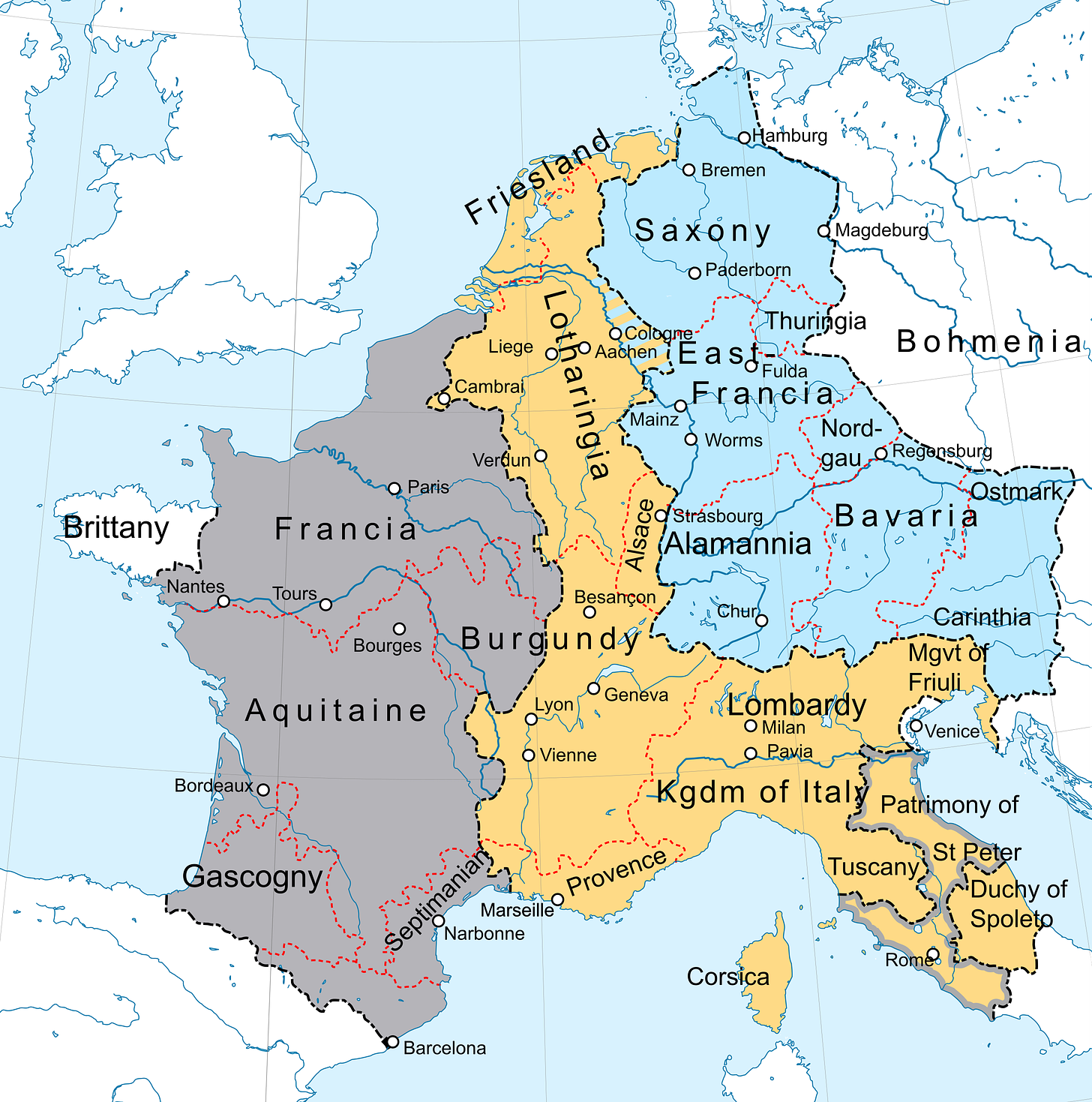
A number of things are rather striking about this partition. First, that Austrasia was split into three parts—one for each son—in an effort to maintain their unity. Second, that Lothair received the Lombard Kingdom whereas the other two were limited to Francia. Third, the middle section that Lothair received was absolutely impossible to defend especially considering that the Alps split it in half.
Despite partitioning the territory, none of it when into actual effect until the Treaty of Verdun in 843 AD, which ended the civil war of the three sons following the death of their father in 840 AD. However, many of the nobles—specifically the counts—opposed the partitioning because their lands were separated upon its fruition. This marks a particularly important area to highlight, as the counts would be become the key decision makers.
How was the partition perceived by the nobles?
The counts of Eastern Francia, in particular, did not favor the partition as it roughly followed along the western side of the Rhine River where many Gauen (sing. Gau) were located. These were essentially regions that composed culturally similar areas, such as the Wormsgau, Maingau or Speyergau (among others), which both had their capital on the Rhine, but most of their territory was to the west.
Whether their input caused a delay in the partition is still up to interpretation, though the charters from that period are somewhat difficult to come by and require experienced paleographers to read. What is known, is that the eastern counts (the descendants of the grafio) were increasingly inheriting the lands from their fathers, but the king was fully within his legal right to replace them at will.
In fact, this happened to the ancestors of the illustrious Babenberg family, known at that time as the Popponids. Following the death of Poppo I at the Battle of Wörnitz in 841 AD, Louis the German simply installed a count of the Speyergau instead of allowing Poppo’s son to inherit the crucially important eastern County of Grabfeld located on the border of Bavaria and Thuringia.
Interestingly, there was no retaliation for this by Poppo’s sons at the time, likely because the eastern counts still understood their role as entirely subservient to the king as extensions of the royal administration in the border regions (i.e. the marches). That would change rather quickly over the following 40 years, as Poppo’s son, Heinrich, reclaimed the county with the support of Louis the German’s son and successor, Louis the Younger.
The point of this minor excursion into the Popponid affairs is simply to illustrate the mindset shift from subservience to semi-independent that many counts experienced over the course of the tumultuous 9th century with a tangible example.
East and West Francia
The partition of Francia in the Treaty of Verdun in 843 AD was completely untenable over the following decades. The hostilities forced the Treaty of Meerssen in 870 AD, resulting in Middle Francia’s division into north and south. The northern part was split between East and West Francia, and the southern part was made into the new Kingdom of Italy. Politically and geographically, this new partition was more strategic, but the territory of Burgundy split from the Kingdom of Italy ten years later in the Treaty of Ribemont in 880 AD.
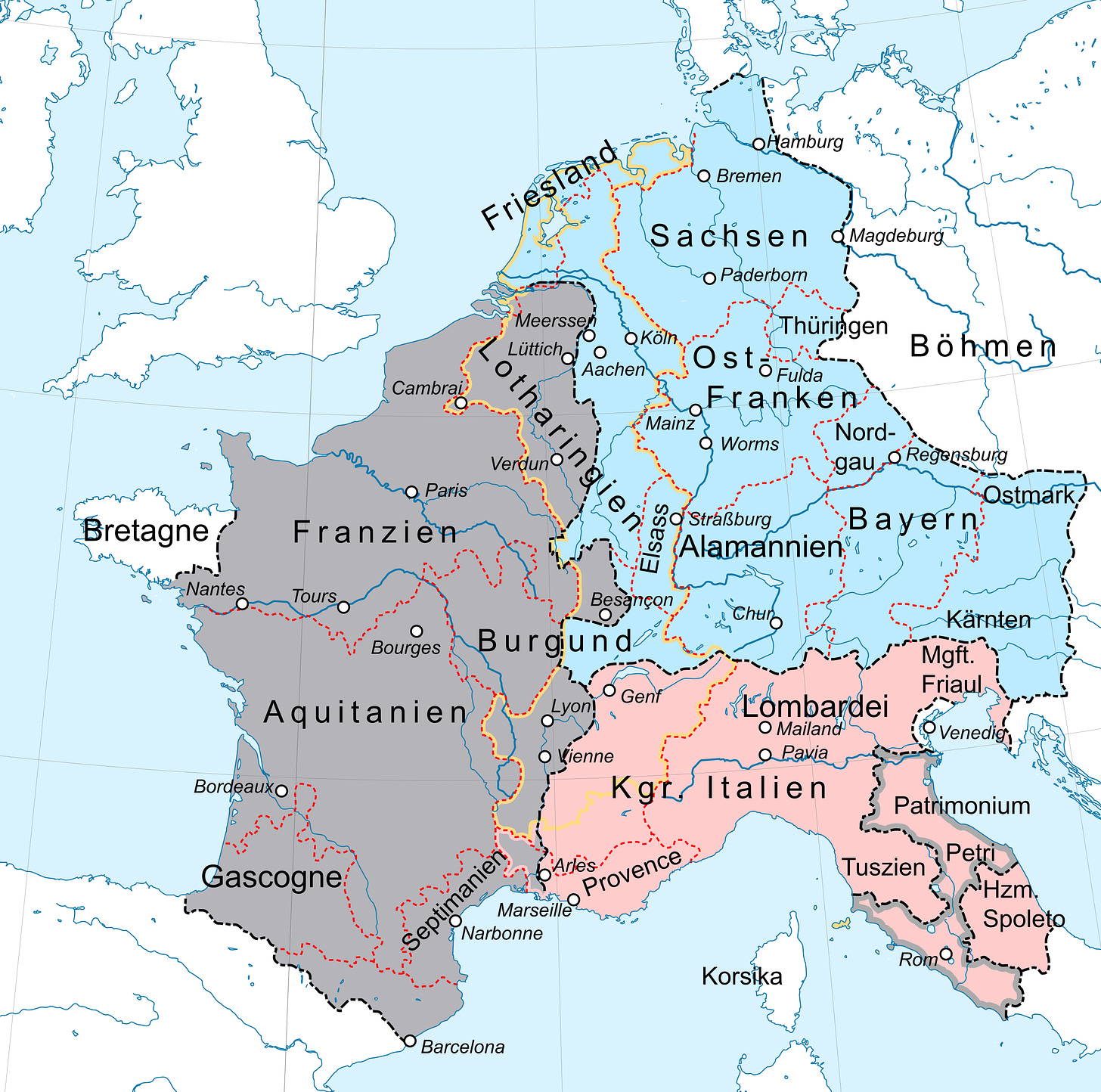
The Treaty of Ribemont was particularly advantageous for East Francia, considering that the majority of Austrasia now lay within her borders, reaching as far as Cambrai. Eastern Francia received what are now the modern-day states of Belgium, Luxemburg, and Netherlands, as well eastern regions of modern-day France.
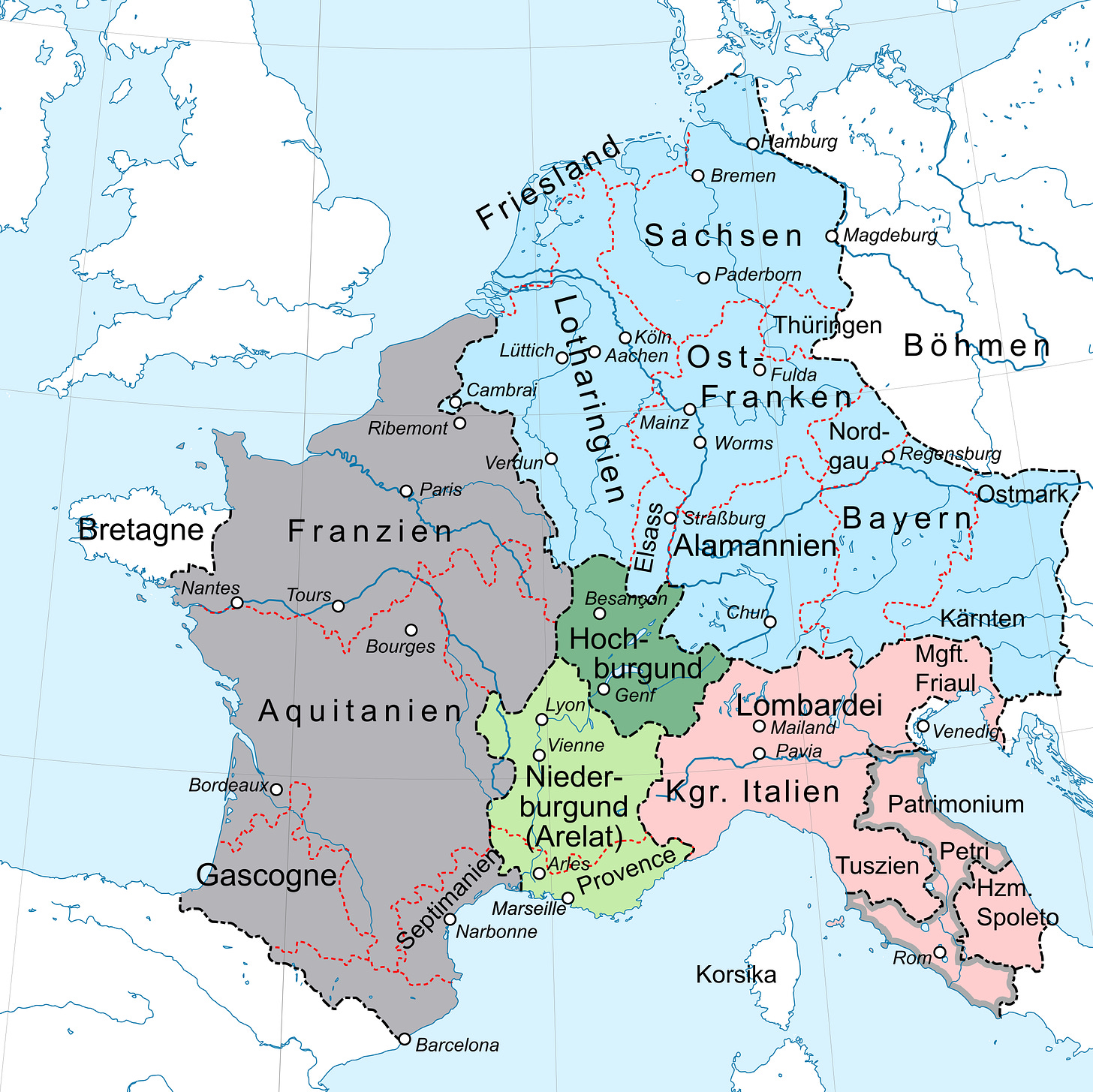
The borders set at Ribemont would remain practically unaltered for the next 600 years until the territory of Duke Charles the Bold of Burgundy was claimed by both France and the HRE upon his death in 1477 AD—a situation that continually oscillated well into the late 16th century. The fate of the other aforementioned regions are far too complex to summarize in a few sentences, but it suffices to say that they remained a part of the HRE until the late 17th century.
Cultural and political changes in East Francia
The core of Eastern Francia, both along and east of the Rhine River, was unaffected by the treaties after 843 AD—an area that had once composed the main territorial focus of Charles Martel and his successors until the turn of the 9th century. Now that the area was firmly in the hands of the Frankish kings, Louis the German began to shift his focus from supporting the eastern bishoprics and abbeys, and instead focus upon securing the newly won portions of Middle Francia.
The region along the Main River—where Frankfurt, Mainz, and Würzburg are located—had once been a vital area in which Louis’ predecessors showered the bishops with endowments to support their missionary efforts. These efforts had been overwhelmingly successful in Christianizing the population, and therefore Louis cut future endowments. He even extended this policy to the northern Abbey of Fulda and the southern Bishopric of Eichstätt—the two most important sites established by Saints Boniface and Waldburga (respectively).
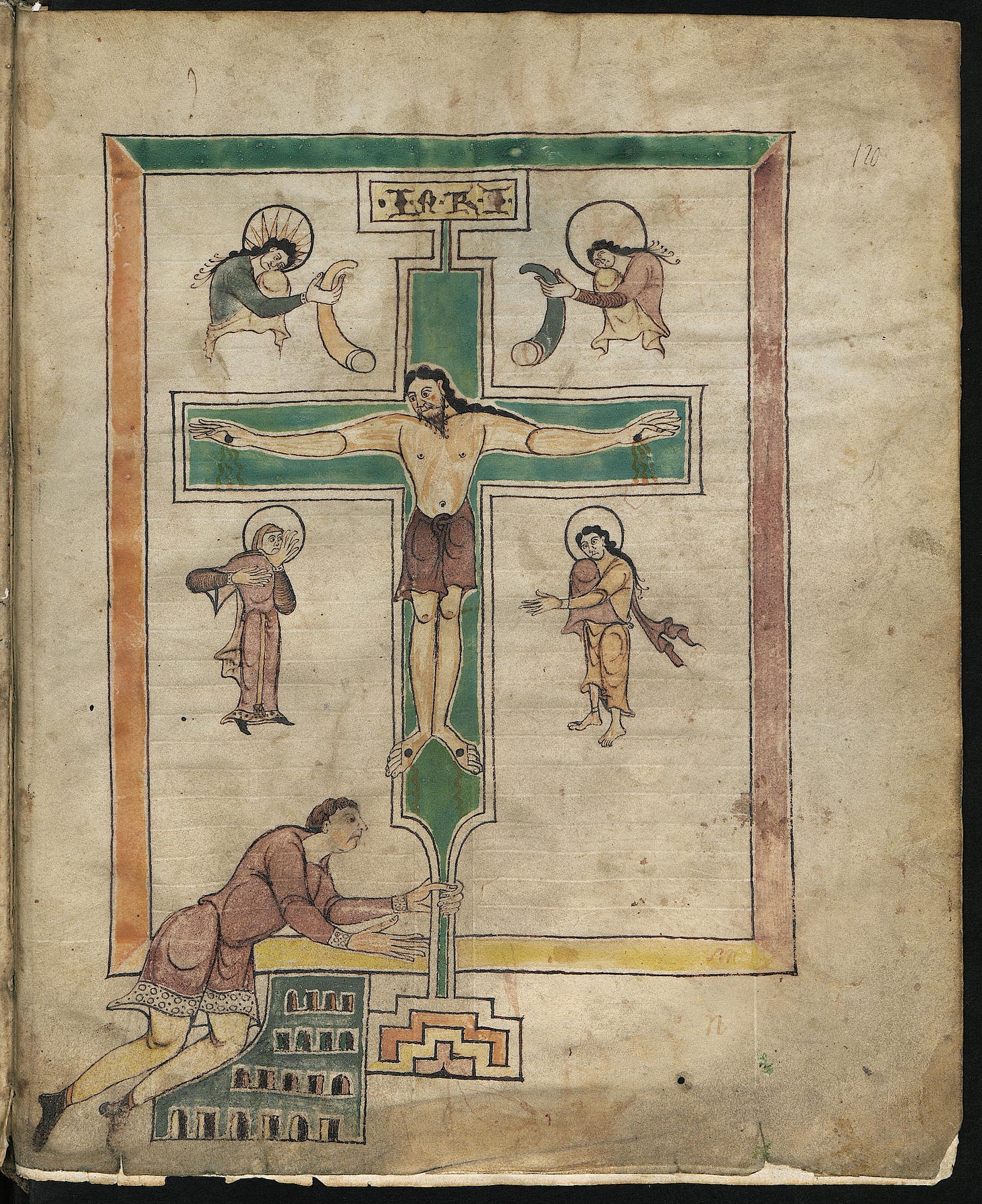
To demonstrate that he no longer viewed them with the same immediacy as his father, Louis the German placed a high-ranking servant of his household, named Gotzbald, as the Bishop of Würzburg from 842 – 855 AD. Gotzbald’s successor, Arn, came from a similar background and was the first Bishop of Würzburg to serve in a military capacity.
Both Gotzbald and Arn were sons of high-ranking servants in Louis’ household and each is referred to as a familiaris in the charters. This bears a striking similarity to the ministeriales, who were appointed from the familiae of the bishops and kings of the HRE from the 10th to 13th centuries to serve as administrators and as clergymen. This clearly indicates that the practice of placing un-free nobles in important positions in the HRE has its roots in the early 9th century.
The reason behind placing a familiaris in such an important position had to do with the unbreakable loyalty that individual would have to show to the king. Considering that Louis the German and his son had both shifted the bases of operations in what was once Middle Francia, they no longer had an overview of the east and required trusted allies to rule in their stead.
However, the lack of royal presence east of the Rhine had a number of implications:
The bureaucracy of constantly appointing new counts in the eastern counties and marches collapsed.
Local counts did not wait, or request, royal involvement in successions and simply passed their estates onto their sons.
These local lords gained more political might, and the eastern counts who had once been regarded as lower than their counterparts in the west were now their equal.
The monastic culture suffered a steep decline—in direct opposition to the aim of a king as stipulated by the 6th century civil code of Justinian I, the role as rector indicated by Saint Isidore of Seville discussed in part four of this series.
East and West Francia continued to struggle along their shared border in which Charlemagne’s grandsons and great-grandsons solicited the support of their respective counts. However, a sense of Frankish unity still remained among them considering that many eastern counts, including Heinrich (the son of Poppo I), came to the support of West Francia during the Viking Siege of Paris in 885 AD.
Luidolfings and Conradins
Amidst the filial quarrels of the Carolingians, a number of other families rose up seeking opportunity with every crisis. Of the various families, none would rise so much as the Saxon Luidolfings and Frankish Conradines. Both were successful in wresting power from the Carolingians in much the same way that the Carolingians had taken power from their Merovingian predecessors.
The Luidolfings stemmed from a Saxon count who rose to fame as both a military leader and clever politician under Louis the German. This Count Luidolf was consequently named Duke of Saxony following the Treaty of Verdun in 843 AD, thereby solidifying his family’s elite status.
The Conradines, on the other hand, came from a long line of Frankish counts. Their namesake, Conrad, had been given the Duchy of Thuringia in the 890s AD and served as a ministerialis of Emperor Arnulf of Carinthia, the grandson of Louis the German. The Conradines managed to amass tremendous influence at the time, setting a trajectory that was unmatched by the Luidolfings. However, there was another family that routinely got involved in politics slightly above their station—the Popponids.
By the late 9th century, the Popponids were known as the Babenberger and had recently regained their County of Grabfeld within the southern portion of Conrad’s Duchy of Thuringia. A bitter feud ensued between Count Heinrich Poppo (the Babenberger) and Duke Conrad (the Conradine) resulting an alliance between the Babenberger, the Luidofings, and a host of Lotharingian counts who turned on the Conradines. The Babenberger would eventually defeat the Conradines near the town of Fritzlar in 906 AD.
A new kingship
Following the death of Arnulf’s young son, Louis the Child, in 911 AD, the throne of East Francia lay vacant and the Carolingians lost power. Furthermore, the kingdom had taken on a new identity since the mid-9th century as it was commonly referred to as Francia Saxoniaque (Francia and Saxony) in the charters rather than always Francia Orientalis (East Francia).
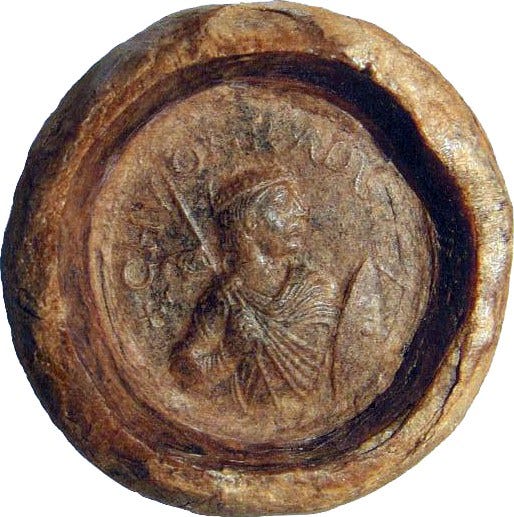
This change was brought about by the dynamic alliance of Franks and Saxons centered around the Luidolfings. However, the princes of East Francia sought to quell the tensions and elected Conrad’s son, Conrad the Younger, as their new king instead of a Luidolfing. After all, the Conradines had been the closest allies of the Carolingians, offering a smoother pathway to transitioning towards a new form of government.
This marked a fundamental shift in how kingship was viewed, as kings were henceforth elected from among the princes. That meant that a genealogical connection to Charlemagne was no longer a deciding factor, nor could one necessarily inherit the kingdom. In essence, kingship was an office reserved for prince perceived as being the most politically and militarily fit leader. Only such a king could embody the role of praesulatus (superintendent), as described by Saint Isidore of Seville.
King Conrad I’s reign was a brief, eight years in which the alliance of the Luidolfings managed to secure the support of the other princes. The object of their praise was the Saxon Duke Luidolf’s grandson, a popular man known as Henry the Fowler. The dying King Conrad held his opponent in high regard and convinced his remaining supporters that the princes ought to elect Henry upon his death.
In May of 919 AD, the princes did precisely that and elected Henry as King of East Francia in the town of Fritzlar, turning the page on centuries of Frankish rule. His son, the Illustrious Otto of Saxony, would later succeed him in 936 AD and eventually be crowned the first Holy Roman Emperor on February 2, 962 AD.
More more reading on this topic:
Lubich, Gerhard. Auf dem Weg zur “Güldenen Freiheit”: Herrschaft und Raum in der Francia orientalis von der Karolinger- zur Stauferzeit. Historische Studien 449. Husum: Matthiesen Verlag, 1996.
McKitterick, Rosamond. The Frankish Kingdoms under the Carolingians 751-987. New York, NY: Longman Group Limited, 1983.




All this talk of partitioning the empire reminds me of Renaissance "divide-the-kingdom" tragedies. Gorboduc (1561) was notable at the time but largely unknown now. The most famous is King Lear. In both cases the division did not go well—perhaps by the time of the Renaissance, Europeans had developed an instinctual pessimism about attempts to divide a realm among multiple children.